
TARGET 199714
Garbage City
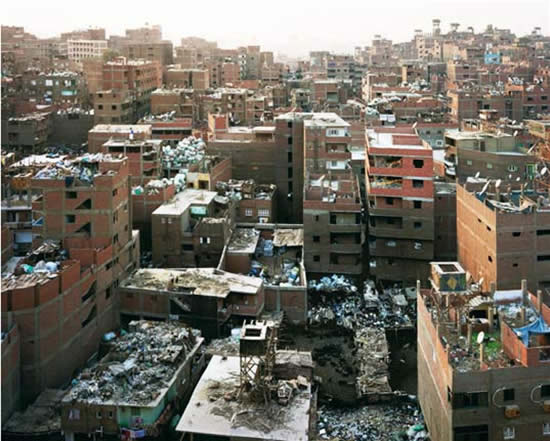
The "Garbage City" of Manshyiat Naser slum, on the outskirts of Cairo
The Manshyiat Naser slum, on the outskirts of Cairo, is often referred to as “The City of Garbage” because of the large quantities of trash shipped here from all over Egypt’s capital city.
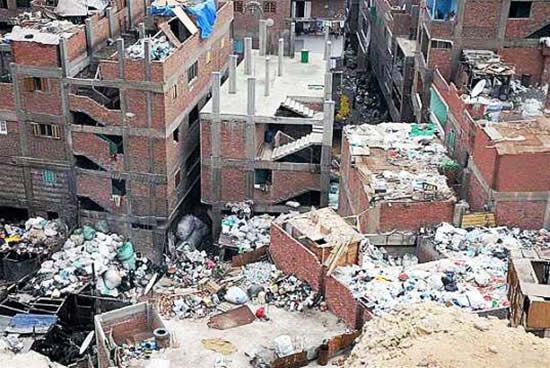
Overlooking the city
As unbelievable as the photos below may look, Manshyiat Naser is a real place, where people make their living out of trash. Like in any other normal community, you’ll find streets, houses and apartments throughout the settlement, but everything and everyone here depends on garbage. The inhabitants of Manshyiat Naser (called Zabbaleen) bring the trash into the city, by truck, cart, or any other means necessary, and sort any recyclable or useful waste.
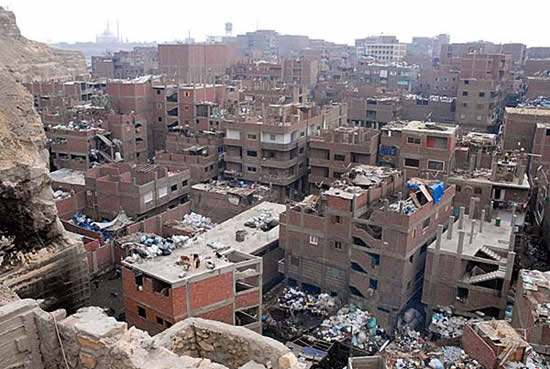
Another view w/Cairo in the background.
Every street and every building in Manshyiat Naser is stacked with mountains of garbage, and you’ll see men, women and children thoroughly digging through them, looking for something they can sell. Although it may seem like an outdated system of handling trash, the Zabbaleen do a far better job than any of the waste handling systems of the modern world. Around 80% of the trash is recycled and resold, while the rest is either fed to the pigs roaming through the city streets, or burned for fuel.
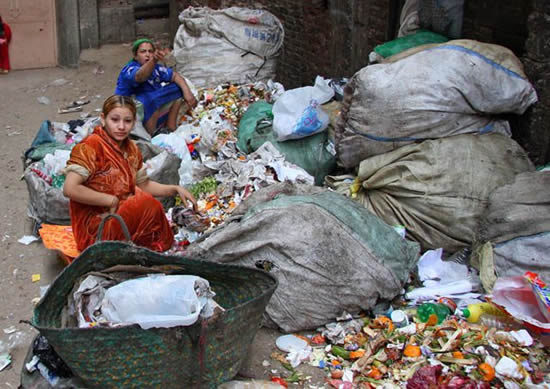
I'm sure that you've seen pictures of the people who live in the garbage dumps of India amid squalor and disease. Those conditions do not exist here, though. The people of the slum section of Cairo have made a business of going through trash and finding things to use, recycle, and sell. The process has become organized for the benefit and profit of all the slum's residents.
The Zabbaleen barely manage to survive on what they make sorting out garbage, but many of them have done it for generations and wouldn’t conceive living their lives otherwise. They dispose of about a third of Cairo’s garbage, at no cost to authorities, and manage to make a decent living for them and their families. The Model of Manshyiat Naser has been copied in various cities around the world, including Manila, Bombay and even Los Angeles.
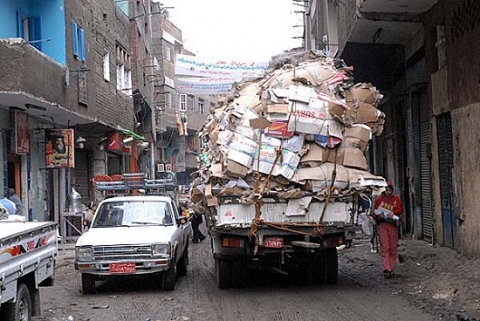
Bringing in even more
The city's garbage is brought to Manshiyat naser by the Zabbaleen, or garbage collectors, who then sort through the garbage to attempt to retrieve any potentially useful or recyclable items. As a passerby walks or drives down the road he will see large rooms stacked with garbage with men, women or children crouching and sorting the garbage into unsellable or sellable. Families typically specialize in a particular type of garbage they sort and sell — one room of children sorting out plastic bottles, while the next of women separating cans from the rest. Anything that can be reused or recycled is saved by one of the numerous families in Manshiyat naser. Various recycled paper and glass products are made and sold from the city, while metal is sold by the kilo to be melted down and reused. Carts pulled by horse or donkey are often stacked 2.5 to 3m (8 to 10 feet) high with the recyclable goods.
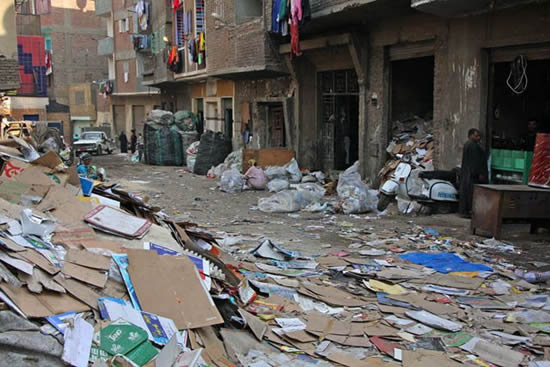
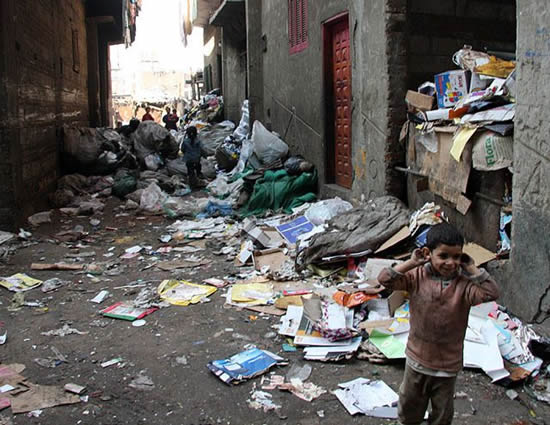
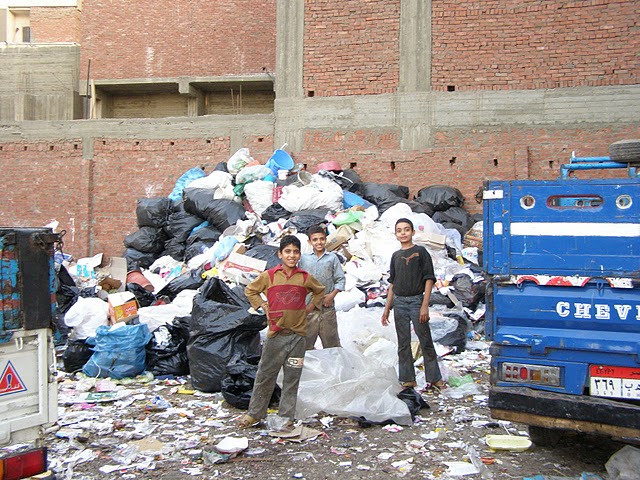
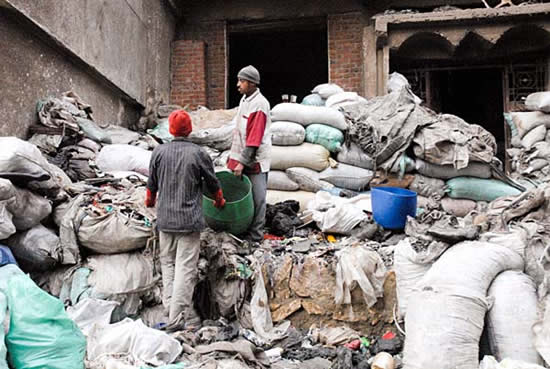
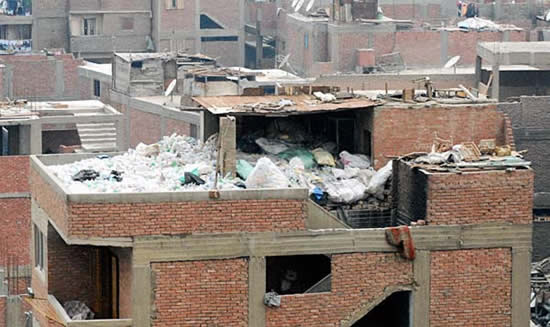
The streets, houses and rooftops store trash waiting to be processed.
The economic system in garbage City is classified as the informal sector. Most families typically have worked in the same area and type of specialization in the garbage piles and continue to make enough money to support themselves.
The Zabbaleen are a minority religious community of Coptic Christians who have served as Cairo's informal garbage collectors for approximately the past 70 to 80 years. Zabbaleen means "Garbage people" in Egyptian Arabic. The Zabbaleen (singular: Zabbal) are also known as Zarraba (singular: Zarrab), which means "pig-pen operators." Spread out among seven different settlements scattered in the Greater Cairo Urban Region, the Zabbaleen population is between 60,000 and 70,000.FEEDBACK MAP
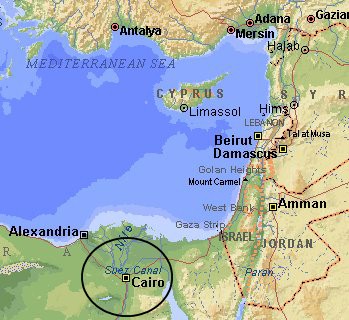
To learn more about the "Garbage City", take a look at the following web sites:
Wikipedia
Oddity Central